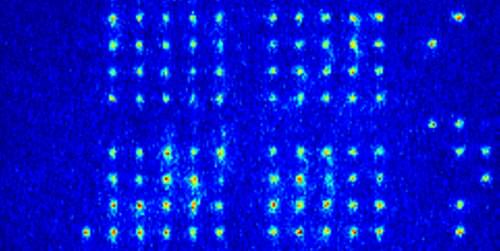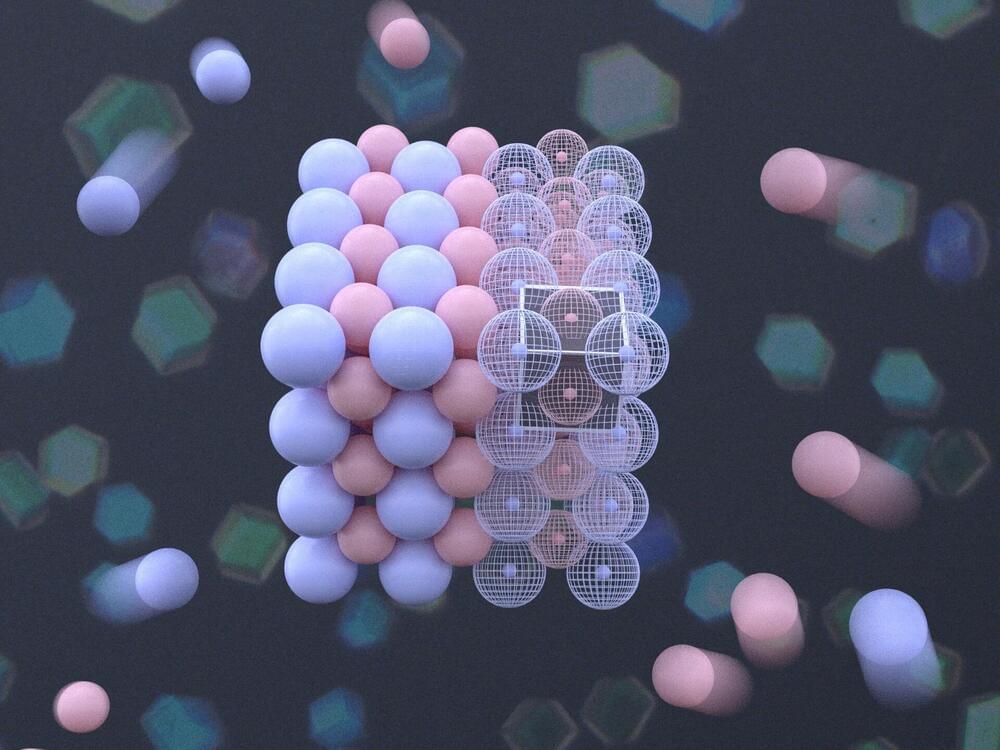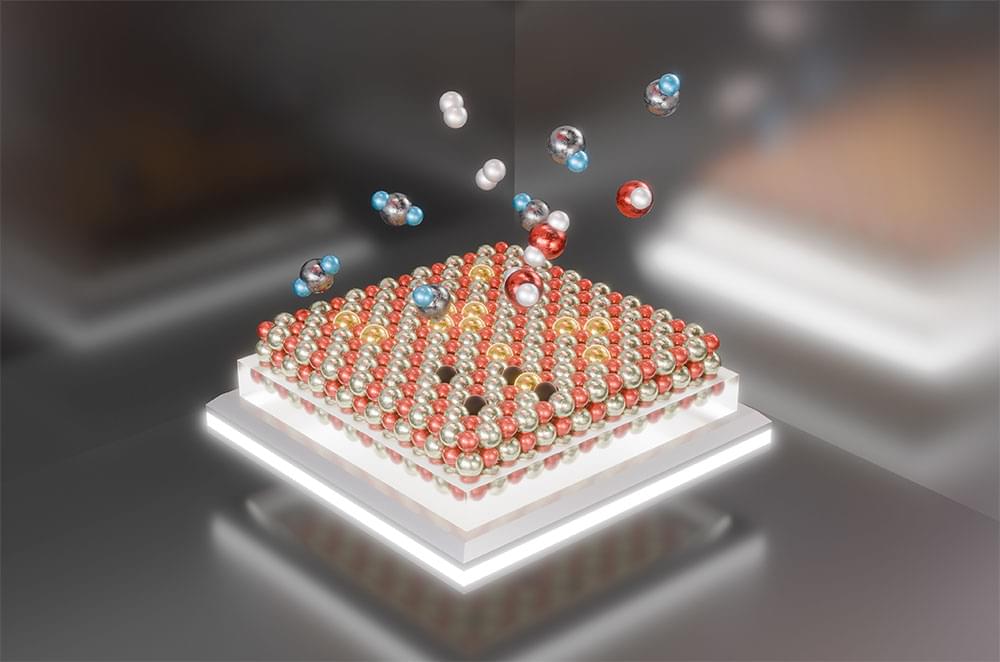Using an atomic array originally designed for quantum memory, researchers have demonstrated a magnetometer with unprecedented spatial resolution.
Category: particle physics – Page 87
Quantum simulators are now addressing complex physics problems, such as the dynamics of 1D quantum magnets and their potential similarities to classical phenomena like snow accumulation. Recent research confirms some aspects of this theory, but also highlights challenges in fully validating the KPZ universality class in quantum systems. Credit: Google LLC
Quantum simulators are advancing quickly and can now tackle issues previously confined to theoretical physics and numerical simulation. Researchers at Google Quantum AI and their collaborators demonstrated this new potential by exploring dynamics in one-dimensional quantum magnets, specifically focusing on chains of spin-1/2 particles.
They investigated a statistical mechanics problem that has been the focus of attention in recent years: Could such a 1D quantum magnet be described by the same equations as snow falling and clumping together? It seems strange that the two systems would be connected, but in 2019, researchers at the University of Ljubljana found striking numerical evidence that led them to conjecture that the spin dynamics in the spin-1⁄2 Heisenberg model are in the Kardar-Parisi-Zhang (KPZ) universality class, based on the scaling of the infinite-temperature spin-spin correlation function.
A team of New York University researchers has created a new way to visualize crystals by peering inside their structures, akin to having X-ray vision. Their new technique—which they aptly named “Crystal Clear”—combines the use of transparent particles and microscopes with lasers that allow scientists to see each unit that makes up the crystal and to create dynamic three-dimensional models.
Chemists at the U.S. Department of Energy’s (DOE) Brookhaven National Laboratory, Stony Brook University (SBU), and their collaborators have uncovered new details of the reversible assembly and disassembly of a platinum catalyst. The new understanding may offer clues to the catalyst’s stability and recyclability.
The work, described in a paper published in the journal Nanoscale (“Unravelling the origin of reaction-driven aggregation and fragmentation of atomically dispersed Pt catalyst on ceria support”), reveals how single platinum atoms on a cerium oxide support aggregate under reaction conditions to form active catalytic nanoparticles — and then, surprisingly, fragment once the reaction is stopped.
Fragmentation may sound shattering, but the scientists say it could be a plus.
Explore the fascinating world of quantum teleportation. Discover its principles, applications, and the profound impact it could have on our future.
Introduction to Quantum Teleportation
Quantum teleportation, a term that sounds like it’s straight out of science fiction, is a very real and advancing field in quantum physics. This groundbreaking technology is not about transporting matter from one place to another but rather involves the transfer of information between quantum particles. This article delves into the science behind quantum teleportation, its potential applications, and the impact it could have on various aspects of our lives.
There’s a hot new BEC in town that has nothing to do with bacon, egg, and cheese. You won’t find it at your local bodega, but in the coldest place in New York: the lab of Columbia physicist Sebastian Will, whose experimental group specializes in pushing atoms and molecules to temperatures just fractions of a degree above absolute zero.
In May 2022, the Facility for Rare Isotope Beams (FRIB) at Michigan State University (MSU), launched its precision measurement program. Staff from FRIB’s Low Energy Beam and Ion Trap (LEBIT) facility take high-energy, rare-isotope beams generated at FRIB and cool them to a lower energy state. Afterward, the researchers measure specific particles’ masses at high precision.
Nanoscale materials offer remarkable chemical and physical properties that transform theoretical applications, like single-molecule sensing and minimally invasive photothermal therapy, into practical realities.
The unparalleled features of nanoparticles make them promising for various research and industrial uses. However, effectively using these materials is challenging due to the absence of a rapid and consistent method to transfer a uniform monolayer of nanoparticles, a crucial step in device manufacturing.
One potential solution to this challenge lies in electrostatic assembly processes, where oppositely charged nanoparticles adhere to a surface, forming a monolayer that repels other similarly charged particles from attaching further. While effective, this process is often slow. Nature provides an innovative model to address this limitation through underwater adhesion strategies, which have evolved to circumvent similar problems.
Since Nobel-Prize-winning physicist Frank Wilczek first proposed his theory over a decade ago, researchers have been on the search for elusive “time crystals”—many-body systems composed of particles and quasiparticles like excitons, photons, and polaritons that, in their most stable quantum state, vary periodically in time.
Wilczek’s theory centered around a puzzling question: Can the most stable state of a quantum system of many particles be periodic in time? That is, can it display temporal oscillations characterized by a beating with a well-defined rhythm?
It was quite rapidly shown that time crystal behavior cannot occur in isolated systems (systems which do not exchange energy with the surrounding environment). But far from closing the subject, this disturbing question motivated scientists to search for the conditions under which an open system (i.e., one that exchanges energy with the environment) may develop such time crystal behavior.
Transferring information from one location to another without transmitting any particles or energy seems to run counter to everything we’ve learned in the history of physics.
Yet there is some solid reasoning that this ‘counterfactual communication’ might not only be plausible, but depending on how it works could reveal fundamental aspects of reality that have so far been hidden from view.
Counterfactual physics isn’t a new thing in itself, describing a way of deducing activity by an absence of something. In one sense, it’s pretty straight forward. If your dog barks at strangers, and you hear silence when the front door opens, you’ve received information that says a familiar person has entered your house in spite of the absence of sound.








